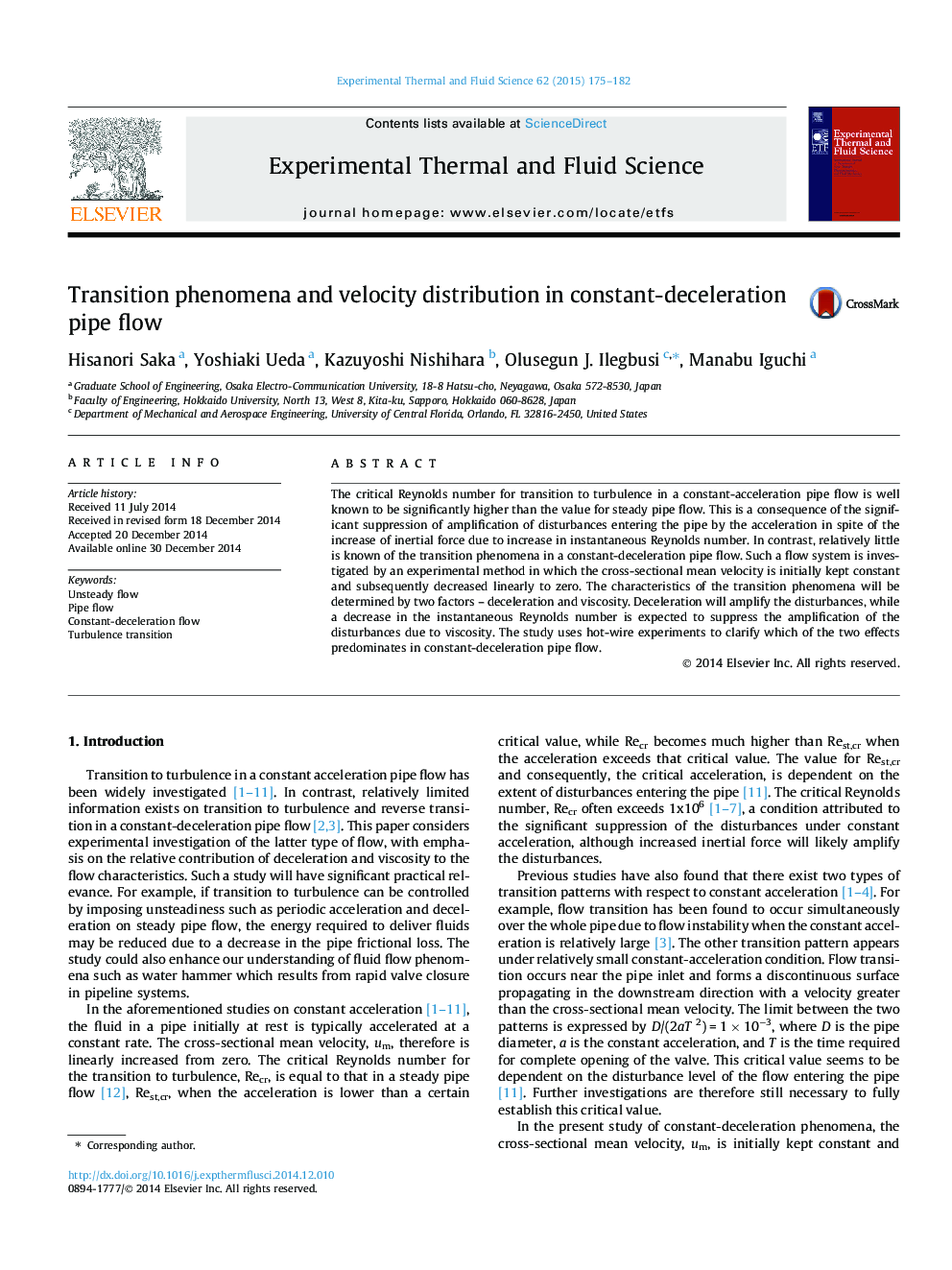| Article ID | Journal | Published Year | Pages | File Type |
|---|---|---|---|---|
| 651297 | Experimental Thermal and Fluid Science | 2015 | 8 Pages |
•Effect of viscous force and deceleration on pipe flow under constant deceleration.•Viscosity predominates for Reynolds number in the range 4190–5930.•Turbulent quasi-steady state occurs for Reynolds numbers above 11000.•Viscous force suppresses generation of turbulence against deceleration effect.•Frictional loss in pipe flows can be reduced by imposing unsteadiness.
The critical Reynolds number for transition to turbulence in a constant-acceleration pipe flow is well known to be significantly higher than the value for steady pipe flow. This is a consequence of the significant suppression of amplification of disturbances entering the pipe by the acceleration in spite of the increase of inertial force due to increase in instantaneous Reynolds number. In contrast, relatively little is known of the transition phenomena in a constant-deceleration pipe flow. Such a flow system is investigated by an experimental method in which the cross-sectional mean velocity is initially kept constant and subsequently decreased linearly to zero. The characteristics of the transition phenomena will be determined by two factors – deceleration and viscosity. Deceleration will amplify the disturbances, while a decrease in the instantaneous Reynolds number is expected to suppress the amplification of the disturbances due to viscosity. The study uses hot-wire experiments to clarify which of the two effects predominates in constant-deceleration pipe flow.
